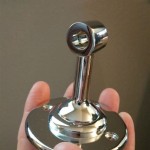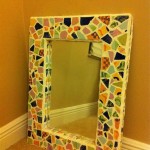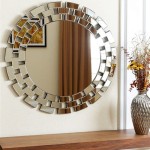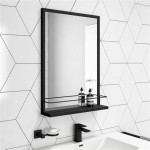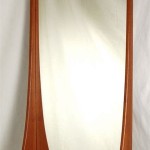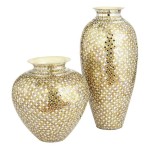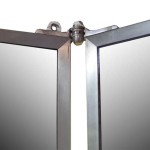How to Use a Concave Mirror: Understanding Principles and Applications
Concave mirrors, characterized by their inwardly curving reflective surface, possess unique optical properties that make them invaluable in various applications. Understanding these properties and how to manipulate them allows for effective utilization in fields ranging from personal grooming to advanced scientific instruments.
Key Properties of Concave Mirrors
Several fundamental properties govern the behavior of light reflecting off a concave mirror:
- Focal Point: Parallel light rays incident upon a concave mirror converge at a specific point called the focal point (F). The distance between the mirror's vertex and the focal point is the focal length (f).
- Center of Curvature: The center of the sphere from which the mirror is a section is the center of curvature (C). The distance between the vertex and the center of curvature is the radius of curvature (R), which is twice the focal length (R = 2f).
- Principal Axis: The imaginary line passing through the vertex, focal point, and center of curvature is the principal axis.
Image Formation in Concave Mirrors
The type of image formed by a concave mirror – real or virtual, upright or inverted, magnified or diminished – depends on the object's position relative to the focal point and center of curvature.
Object Beyond the Center of Curvature
When an object is placed beyond the center of curvature (C), the reflected rays converge to form a real, inverted, and diminished image between the focal point (F) and the center of curvature (C).
Object at the Center of Curvature
Placing the object at the center of curvature results in a real, inverted image of the same size as the object, located at the center of curvature itself.
Object Between the Center of Curvature and Focal Point
An object positioned between the center of curvature (C) and the focal point (F) produces a real, inverted, and magnified image beyond the center of curvature.
Object at the Focal Point
When an object is placed exactly at the focal point, no real image is formed. The reflected rays are parallel and do not converge.
Object Between the Focal Point and the Mirror
Positioning the object between the focal point (F) and the mirror results in a virtual, upright, and magnified image behind the mirror. This is the principle behind the magnifying effect commonly seen in makeup mirrors.
Applications of Concave Mirrors
The unique image-forming properties of concave mirrors lead to their diverse applications across various fields.
Personal Care
Concave mirrors serve as magnifying makeup or shaving mirrors. The magnified, upright image allows for detailed viewing during grooming.
Headlights and Torches
Concave mirrors are employed in headlights and torches to create a parallel beam of light. A light source placed at the focal point of the mirror produces reflected rays that travel parallel to the principal axis, maximizing illumination distance.
Telescopes
Reflecting telescopes utilize large concave mirrors as primary light-gathering components. These mirrors collect and focus faint light from distant celestial objects, allowing for observation and study.
Solar Furnaces
Large concave mirrors are used in solar furnaces to concentrate sunlight onto a small area. The intense heat generated at the focal point can reach high temperatures, suitable for various industrial processes.
Ophthalmoscopes
Ophthalmoscopes, used by eye doctors to examine the interior of the eye, incorporate concave mirrors to direct and focus light into the patient's eye while allowing the physician to view the reflected image.
Dentistry
Concave mirrors provide dentists with magnified and illuminated views of a patient's teeth. The mirror's shape allows for easy manipulation within the oral cavity.
Using a Concave Mirror Effectively
Effective utilization of a concave mirror requires consideration of the desired image characteristics and the appropriate object placement.
Magnification
For magnification, the object must be placed between the focal point and the mirror. The closer the object is to the focal point, the greater the magnification.
Real Image Projection
To project a real image onto a screen, the object must be placed beyond the focal point. The distance between the mirror and the screen determines the image size and focus.
Parallel Beam Generation
Placing the light source at the focal point generates a parallel beam suitable for illumination purposes in headlights or torches.
Safety Precautions
While generally safe, certain precautions should be observed when using concave mirrors.
- Avoid focusing sunlight: Focusing concentrated sunlight with a concave mirror can generate significant heat and potentially cause burns or fire hazards.
- Handle with care: Like any optical device, concave mirrors should be handled with care to prevent scratching or damage to the reflective surface.
Understanding the principles of reflection and image formation with concave mirrors enables effective utilization in various applications. By appropriately positioning the object relative to the mirror's focal point and center of curvature, users can control image characteristics such as size, orientation, and type, maximizing the mirror's utility.

Concave Mirror Science Learning Hub

Concave Mirror Study Guide Inspirit Learning Inc

S And Uses Of Concave Mirror In Daily Life Byju

Light Uses Of Concave Mirror Infinity Learn By Sri Chaitanya

Uses Of Concave Mirror Overview Structure Properties

What Are The Uses Of Concave And Convex Mirror With Diagram Brainly In

Uses Of Concave Mirror Definition Types And Importance

Ray Diagrams 1 Of 4 Concave Mirror

Concave Mirrors And Convex Ray Diagrams Image Formation Examples

Concave Mirrors

